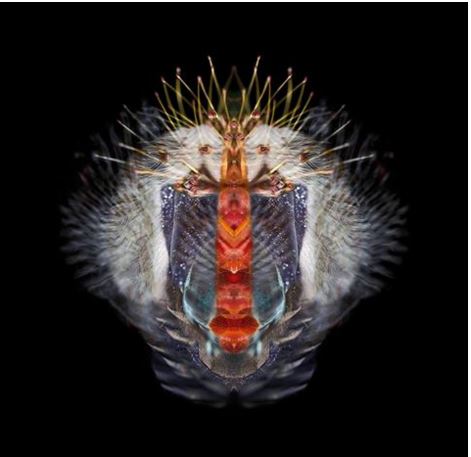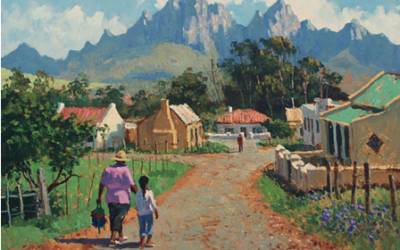An exceptionally unique style by photographer Oliver Barnett is on offer at Ebony gallery on Loop Street, writes Danny Shorkend.
As the title of the exhibition suggests, namely Polymorphic, one finds oneself in the midst of works that pulsate with energy and a sense that they are part of an evolutionary chain of changing shapes and organic growth, moving one way and then another, disappearing and then reappearing in a different guise. And this implied shift in form is not simply plant-like, but animal and human as well.
In terms of the plant-like effect of the work, Barnett’s method is to pick flowers and leaves and then breaks them apart only to reassemble them and subsequently photograph them under specified lighting arrangements.
The results are dazzling; one feels submerged in an alternative world of organic forms or possibly a witness to peculiar jelly-like species deep under the oceans. However, there is also an animal and human quality. The forms are decidedly mask-like, African references to the spiritual work of the shaman, who, in their profound understanding of the spirit-world and its relationship with the animal kingdom, bring to the fore special gifts from the “other side”.
The works look as if they are a kind of light-box; such is the great intensity of light that pervades each image.
The exhibition forms a unified whole, a consistent style and a coherent, pristine and professional solo show. The stark, black backgrounds offset against the fluid, light imagery complement one another, producing a rather neat style as such. This is curious, considering the subject matter appears to make references to the primal, instinctual and primitive or at least the occult, that which often contradicts the order of scientific investigation and neat categories.
What is particularly strong – and difficult to achieve with the medium of photography – is that the artist is able to conjure a sense both of the thorniness of the mask-like forms and its softness, as if some of the forms have whiskers or strange tentacles. There is the sense in which one is unsure whether these are inanimate, fractal light forms that have no volition or whether they, in point of fact, make reference to particular qualities and beings of another dimension. Other associations that one might make is that these are ink-blot like, so that what they inspire in the viewer naturally varies and that itself is a mirror to the one that perceives these objects. In this sense, the images are psychologically meaningful and act as mirrors of the soul.
The colours are astounding, charged with energy and luminous. Perhaps one can question whether these “masks” or forms in their disembodied state exist more as mind than as body. In this respect, they are ethereal, rather than associated with the grime and dust of the earth.
This is both positive and negative. Positive in the sense that they lure one into a world and beingness that is, quite simply out of this world. Negative, in the sense that the relegation of the body by the mind or spirit is antiquated. Put simply: mind functions through and with the body. Mind expresses itself with and through the body. And even if death should bring about such a separation, there are some traditions that believe that the reinsertion of mind within a new body is optimal or part of the process.
So that the ultimate polymorphic activity is precisely in the continual regeneration of form, not its obliteration and denial, not in the absence from the body with the presence of spirit. Such a viewpoint one may consider more sensitive to the fact that life is what happens – for better or worse – in the necessary union of matter and spirit. Barnett’s images are tantalisingly spiritual, but one senses the head has been severed from the body. This harks back to Descartes’ dualism, which is perhaps rather outdated.
Having said that the overall effect of these forms in their polymorphic dance of continuous change and growth is that they are light bulbs, the obvious symbol for insight, for ideas. In such terms, their creative effect and their philosophical strength lies in the notion that Mind is closest to the spirit world through the realm of thought, the innermost part of self. On the other hand, the occult is decidedly beyond reason, and (in my limited awareness of these arts) requires alternative functions of the brain that require the suspension of rational thought. Perhaps art is the bridge between such antithetical worlds – and one that requires a body in the form of the artwork.
A visual delight and well worth visiting the gallery.
WHAT: POLYMORPHIC by Oliver Barnett
WHERE: Ebony
WHEN: Until 2nd May
DANNY SHORKEND reviews 021 424 9985






